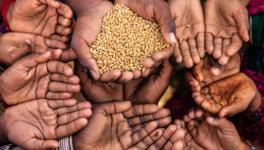Decoding Health Budget 2022-23: The Good and the bad
The Union Budget 2022-23 rode on the back of a myriad of expectations for different sectors emerging out of the context of the pandemic. The provisions to be made for the health sector were especially anticipated, given its critical role during and beyond the present crisis.
The recently published National Family Health Survey (NFHS-5) for 2019-21 has revealed a mixed picture in terms of the health indicators in the country. On the one hand, there are positive developments like the reduction in the Infant Mortality Rate (IMR) (40.7 in NFHS 4 to 35.2 in NFHS 5) and Under 5 Mortality Rate (U5MR) (49.7 in NFHS 4 to 41.9 in NFHS 5). On the other hand, there is an increase in anaemia among women and children, which in turn will have implications on malnutrition in the future. The long-term effect of the pandemic might worsen many of these indicators further. A strong budgetary commitment by the government is one of most critical factors for addressing these concerns.
Overall, the budget for health has seen a rise of about 16% in absolute terms between budgest estimates (BE) of 2021-22 and 2022-23. However, as a percentage of GDP, it has remained stagnant at 0.35%; this might make it difficult to cater to the enhanced resource requirements of the sector at this juncture. A stagnant trend will also make it hard to reach the standard set by the National Health Policy of total public health expenditure being 2.5% of the GDP by 2025.
Focus of Budget 2022-23
The major focus area within the Rs 89,251 crore health budget for 2022-23 has been the strengthening of health infrastructure through schemes like the Pradhan Mantri Swasthya Suraksha Yojana (PMSSY), which has seen a notable rise of almost 43%. The increased allocations under this flagship tertiary healthcare programme will play an important role in building hospitals and ramping up the quality of medical education in the underserved regions. In this regard, the Parliamentary Standing Committee on Health and Family Welfare noted in March 2021 that there is a need for expediting the construction related works under PMSSY and ensure better utilisation of funds. It also called for a stronger monitoring mechanism in this scheme as well as filling up of vacancies in all the AIIMS that have been set up.
The substantial rise in the outlays for the PM Ayushman Bharat Health Infrastructure Mission (PMABHIM), from Rs 1,040 crore in 2021-22 (Revised Estimates) to Rs 5,846 crore for 2022-23 (BE), is also expected to boost the infrastructure development of health systems, including pandemic research and the platform for One Health, both during COVID-19 and beyond it. Keeping in line with the overall focus on digital systems by the Union government, digital health infrastructure has also received a push with allocations for the National Digital Health Mission rising from Rs 75 crore in 2021-22(RE) to Rs 200 crore this year.
Recognising that mental health issues have been on the rise due to the pandemic, the Budget Speech of the finance minister also mentioned a plan to set up a Tele Mental Health Programme. The latter, however, is yet to be backed by additional resources in the budget for mental health, which stood at a constant level of Rs 40 crore last year.
Areas Needing More Attention
Primary care, through the key intervention of National Health Mission (NHM), has seen very little increase from last year (1.8%), and in fact, its share in the total health budget has come down from 48% in 2021-22(BE) to 42% in 2022-23 (BE). It must be mentioned here that the 15th Finance Commission has recommended prioritising primary healthcare with 67% of the total health budget being earmarked for it. The higher resource requirements for primary care can also be gauged from the demands submitted by the states to the Union Ministry, of which the central allocations in NHM have been just 60% and 70% respectively in 2020-21 and 2021-22. However, due to the merging of several NHM components into a new scheme, the 'Flexible Pool for RCH & Health System Strengthening, National Health Programme and National Urban Health Mission', it has become difficult to track disaggregated data.
The insurance-based schemes like Pradhan Mantri Jan Arogya Yojana (PMJAY), Rashtriya Swasthya Bima Yojana (RSBY) and the Senior Citizens Health Insurance Scheme have seen marginal increases in allocations for 2022-23. This again might be insufficient to extend the current net of insurance to cover more people, especially those in the unorganised sector which can lower Out of Pocket Expenditure (OOPE) on health.
Human resource shortages have been widespread across different levels of healthcare, this has impeded service delivery to the ones who need it the most. The Rural Health Statistics (2019-20) recorded 63.3% vacancies in sanctioned posts for specialists at Community Health Centres in rural areas. It also recorded a 38.2% shortfall in urban Primary Health Centres as of March 2020. Even the increased allocations [Rs 4,800 crore in 2021-22(BE) to Rs 7,500 crore in 2022-23(BE)] under the scheme Human Resources for Health and Medical Education under NHM may not be enough to tide over the magnitude of the shortages and needs higher priority in the budget. The Union Government funded scheme, Health Sector Disaster Preparedness and Response and Human Resources Development for Emergency Medical Services, which caters to building capacities of health professionals, has seen stagnant allocation of Rs. 130 crore.
Lastly, while the COVID-19 related packages are yet to see any outlays this year, the low levels of utilisation of funds in 2020-21 for the vaccination scheme for healthcare workers (at 38%) remains a source of concern. In terms of the vaccination drive for the general population, onlyRs. 19675 crore out of the total budgeted Rs 35000 crore had been spent up to December 15, 2021. With India yet to roll out a vaccination for children below the age of 15 and with a sizeable adult population remaining to be fully jabbed, we will require higher allocations coupled with better utilisation of funds.
The two-year long and continuing effect of the pandemic has seriously affected the progress towards achieving the Sustainable Development Goals by 2030. Moving ahead, India's key health targets like reduction in the U5MR to 25 per live births or less, ending the AIDS epidemic and tuberculosis, reduction of mortality by non-communicable diseases, and addressing mental health issues require a larger financial commitment in the budget.
Simonti Chakraborty and Anjana Rajagopalan work with the Centre for Budget and Governance Accountability. Views expressed are personal.
Get the latest reports & analysis with people's perspective on Protests, movements & deep analytical videos, discussions of the current affairs in your Telegram app. Subscribe to NewsClick's Telegram channel & get Real-Time updates on stories, as they get published on our website.
























